Difference between revisions of "Flammability and fire retardancy of leather"
| Line 5: | Line 5: | ||
==Fire protection and leather== | ==Fire protection and leather== | ||
| − | [[ | + | [[Leather]] barely burns. If you hold a lighter on a piece of leather, it will shrink and cocoon, but it hardly burns or continues to burn. Therefore, it is easier than other materials to equip leather with flame retardant properties. [[Leatherette]] is much more flammable than [[leather|genuine leather]]. |
| − | + | [[Aircraft leather]] as well as [[boat leather|leather on ships]] or on trains and [[Bus seats|buses]] must meet minimum standards for fire protection. But also in the case of public buildings (hotels, waiting areas, administrative buildings, retirement homes, etc.), demands are placed on flammability. | |
| − | + | ||
| − | [[ | + | |
| − | + | ||
| − | + | ||
| − | + | ||
| − | + | ||
| − | + | ||
| − | + | ||
| − | + | ||
| Line 27: | Line 18: | ||
</p> | </p> | ||
<p align=center> | <p align=center> | ||
| − | ''[[ | + | ''[[Leather furniture]] in the public.''<br></p> |
<p> </p> | <p> </p> | ||
| − | + | The requirements are particularly high in [[aircraft leather]]. The [[tanner]] must pay attention to the necessary properties when [[tanning leather|tanning]]. This is done by various measures in the [[Leather production|manufacturing process]]. | |
| Line 38: | Line 29: | ||
</p> | </p> | ||
<p align=center> | <p align=center> | ||
| − | '' | + | ''Whether as [[aircraft leather|aircraft seats]] or in the waiting area, the standards are strict.''<br></p> |
<p> </p> | <p> </p> | ||
| − | + | A [[tanner]] must know when starting the leather production, if a leather has to fullfil fire protection standards. The flammability and the formation of smoke must be considered. Many work steps in the tannery must be adapted accordingly. The selection and quantity of the [[tanines|retanning agents]], the right choice and amount of [[Oils & fats in the leather industry|refatting components]] and the addition of flame retardants are important. It is mentioned in the literature that the [[Chrome tanned|chrome content]] in the leather should be less than 3.5% and that fish oil-based refatting agents are poorer than other refatting agents. Synthetic oils are also referred to as problematic. The leather fibers must not be [[Looseness|too loose]]. | |
| − | + | There are a lot of legal regulations and standards, and many countries have their own regulations. | |
| − | |||
| − | |||
| − | |||
| − | |||
<p align=center> | <p align=center> | ||
| Line 54: | Line 41: | ||
</p> | </p> | ||
<p align=center> | <p align=center> | ||
| − | '' | + | ''Leather can be tested according to different standards.''<br></p> |
<p> </p> | <p> </p> | ||
| − | == | + | == The standards for fire protection in leather == |
| − | + | The following standards are associated with leather: | |
| − | '''FAR 25.853 a) | + | '''FAR 25.853 a) and b):''' For the equipment of airplanes, private jet or sports machines. . |
| − | '''IMO A.652(16):''' | + | '''IMO A.652(16):''' Fire protection test methods for [[upholstery leather|upholstery]] furniture for [[boat leather|sailing ships, yachts and large ships]]. Test methods: BS 5852-1, ISO 8191-1/-2, EN 1021-1/-2. |
| − | '''B1, B2, EMPA (5.3), BS 5852 (1990) Crib 5:''' | + | '''B1, B2, EMPA (5.3), BS 5852 (1990) Crib 5:''' [[Leather furniture|Upholstery furniture]], chair upholstery in halls (cinema, theater, etc.). Door and [[Leather wallpaper|wall coverings]]. |
| − | '''DIN 4102:''' | + | '''DIN 4102:''' Classification into classes of flammability. |
| − | '''DIN 4102 | + | '''DIN 4102 part 1 (B2):''' Materials for use in construction. |
| − | '''DIN 4102 | + | '''DIN 4102 part 15/16 (B1):''' Reaction of combustible and non-combustible products on fire. |
| − | '''EMPA:''' | + | '''EMPA:''' Swiss Federal Institute for Materials Testing and Research. |
| − | '''BS 5852 1990 ( | + | '''BS 5852 1990 (Great Britain):''' Definition of a test method in which a specially designed model simulates an armchair. |
| − | '''DIN 54 342 | + | '''DIN 54 342 part 1 (= EN 1021-1, cigarette test):''' Furniture. Evaluation of the flammability of upholstered furniture. Part 1: Ignition source smoldering cigarette (ISO 8 191), EN 1021-1. |
| − | '''EN 1021 - 1/2 : 1994:''' | + | '''EN 1021 - 1/2 : 1994:''' This standard applies throughout the EU and examines the reaction of a substance to a burning cigarette and a butane flame (a simulated match). It replaces a variety of national tests, including DIN 54342 - 1/2 in Germany and BS 5852: 1990 in Great Britain. |
| − | '''EN 1021 - | + | '''EN 1021 - part 1:''' In part 1 of the test, a burning cigarette is placed in the angle of the test model and is glowed in its entire length. After 60 minutes the fabric should not glow or burn. |
| − | '''EN 1021 - | + | '''EN 1021 - part 2:''' A 35 mm high butane flame represents a burning match and is also placed in the angle between the backrest and seat of the test model for 15 seconds. After the flame has been removed, the fabric should not start to burn within 2 minutes. |
| − | '''EN 13501 - | + | '''EN 13501 - part 1:''' Similar to DIN 4102-1. The fire behavior of building materials for use in construction is tested. |
| Line 119: | Line 106: | ||
* [[Shrunken leather - leather shrinkage]] | * [[Shrunken leather - leather shrinkage]] | ||
* [[Leather quality]] | * [[Leather quality]] | ||
| − | |||
| − | |||
| − | |||
| − | |||
Revision as of 21:38, 12 November 2016
Contents
Fire protection and leather
Leather barely burns. If you hold a lighter on a piece of leather, it will shrink and cocoon, but it hardly burns or continues to burn. Therefore, it is easier than other materials to equip leather with flame retardant properties. Leatherette is much more flammable than genuine leather.
Aircraft leather as well as leather on ships or on trains and buses must meet minimum standards for fire protection. But also in the case of public buildings (hotels, waiting areas, administrative buildings, retirement homes, etc.), demands are placed on flammability.
Leather furniture in the public.
The requirements are particularly high in aircraft leather. The tanner must pay attention to the necessary properties when tanning. This is done by various measures in the manufacturing process.
Whether as aircraft seats or in the waiting area, the standards are strict.
A tanner must know when starting the leather production, if a leather has to fullfil fire protection standards. The flammability and the formation of smoke must be considered. Many work steps in the tannery must be adapted accordingly. The selection and quantity of the retanning agents, the right choice and amount of refatting components and the addition of flame retardants are important. It is mentioned in the literature that the chrome content in the leather should be less than 3.5% and that fish oil-based refatting agents are poorer than other refatting agents. Synthetic oils are also referred to as problematic. The leather fibers must not be too loose.
There are a lot of legal regulations and standards, and many countries have their own regulations.
Leather can be tested according to different standards.
The standards for fire protection in leather
The following standards are associated with leather: FAR 25.853 a) and b): For the equipment of airplanes, private jet or sports machines. .
IMO A.652(16): Fire protection test methods for upholstery furniture for sailing ships, yachts and large ships. Test methods: BS 5852-1, ISO 8191-1/-2, EN 1021-1/-2.
B1, B2, EMPA (5.3), BS 5852 (1990) Crib 5: Upholstery furniture, chair upholstery in halls (cinema, theater, etc.). Door and wall coverings.
DIN 4102: Classification into classes of flammability.
DIN 4102 part 1 (B2): Materials for use in construction.
DIN 4102 part 15/16 (B1): Reaction of combustible and non-combustible products on fire.
EMPA: Swiss Federal Institute for Materials Testing and Research.
BS 5852 1990 (Great Britain): Definition of a test method in which a specially designed model simulates an armchair.
DIN 54 342 part 1 (= EN 1021-1, cigarette test): Furniture. Evaluation of the flammability of upholstered furniture. Part 1: Ignition source smoldering cigarette (ISO 8 191), EN 1021-1.
EN 1021 - 1/2 : 1994: This standard applies throughout the EU and examines the reaction of a substance to a burning cigarette and a butane flame (a simulated match). It replaces a variety of national tests, including DIN 54342 - 1/2 in Germany and BS 5852: 1990 in Great Britain.
EN 1021 - part 1: In part 1 of the test, a burning cigarette is placed in the angle of the test model and is glowed in its entire length. After 60 minutes the fabric should not glow or burn.
EN 1021 - part 2: A 35 mm high butane flame represents a burning match and is also placed in the angle between the backrest and seat of the test model for 15 seconds. After the flame has been removed, the fabric should not start to burn within 2 minutes.
EN 13501 - part 1: Similar to DIN 4102-1. The fire behavior of building materials for use in construction is tested.
Can leather be made flame retardant after being processed?
Frequently the question arises as to whether already processed leather can be treated flame retardant afterwards in order to meet the necessary standards. This happens when leather has been offered for a bidding offer without heaving a certificate or because the leather has already been bought or even has already been processed.
First of all, the tannery (or the leather dealer) should be asked which standards are already fulfilled in this type of leather. If no standard has been tested, chances are bad. The lower the requirements for the leather are, the sooner a test can result that the leather is conform to the norm. To test if a leather meets the standard, the leather must be destroyed by heat. According to the present state of the art, there is no treatment method which subsequently changes a non-standard leather according to the standard.
Furthermore, subsequent treatment methods, such as chemical or wet cleaning, washing, painting, printing etc., may adversely affect the fire behavior. This should be taken into account or should be excluded for use.
Video about leather and high temperatures
Video about the effect of heat on leather.
The manufacturing of a fire helmet in the USA.
Additional information







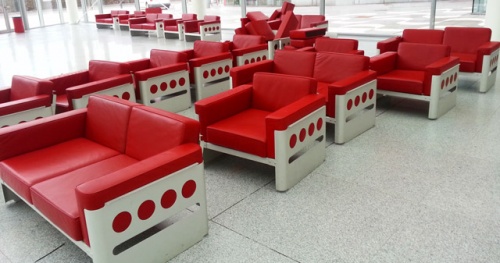
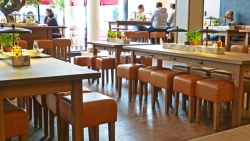
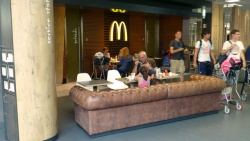
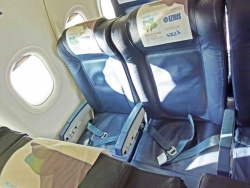
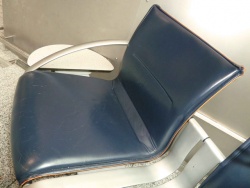


 a kotori web solution
a kotori web solution